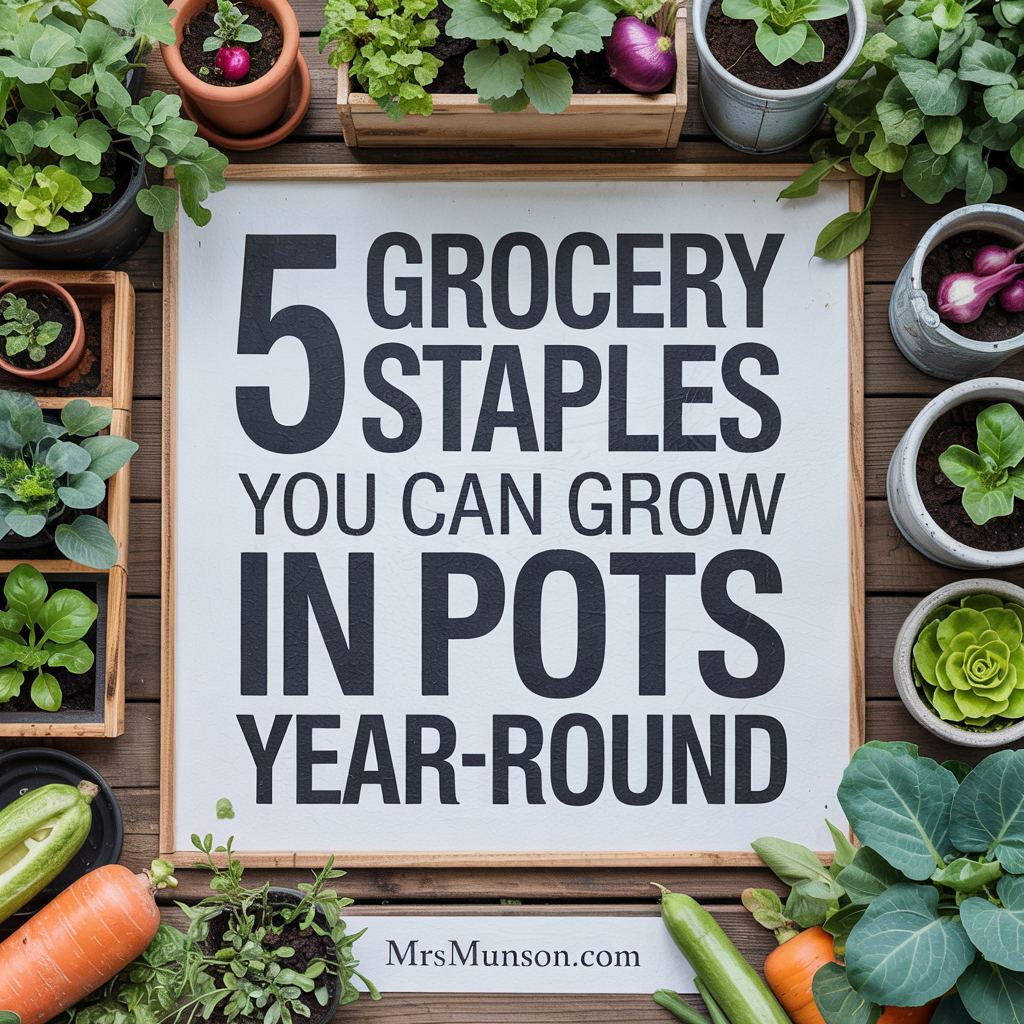Grow Your Own Grocery Staples: 5 Vegetables You Can Grow in Pots Year-Round 🪴
🔗 This post contains affiliate links. I may earn a small commission at no extra cost to you. Thank you for supporting my blog! 💛
Tired of buying the same veggies every week? With just a few pots and a little sunlight, you can grow your grocery staples at home—even if you don’t have a big backyard! If you are looking for vegetables you can grow in pots year-round, this list is for you. These five vegetables are perfect for container gardening and can be grown year-round with just a bit of seasonal care. 🌱
🧺 What You’ll Need
Before you get started, here’s a quick checklist of essentials:
- 🪴 Containers with drainage holes – at least 5 gallons for most vegetables
- 🌿 High-quality potting mix – not garden soil
- 🍂 Compost or slow-release fertilizer – for steady nutrition
- 💦 Watering can or gentle hose sprayer
- 🌞 A sunny spot – most veggies need 4–6 hours of light daily
- [Insert Affiliate Product Links Here – pots, soil, grow lights, etc.]
Once you’ve gathered your supplies, it’s time to dig into the top 5 grocery staples that thrive in containers! 🧤
Top Vegetables You Can Grow in Pots Year-Round
🥬 1. Lettuce
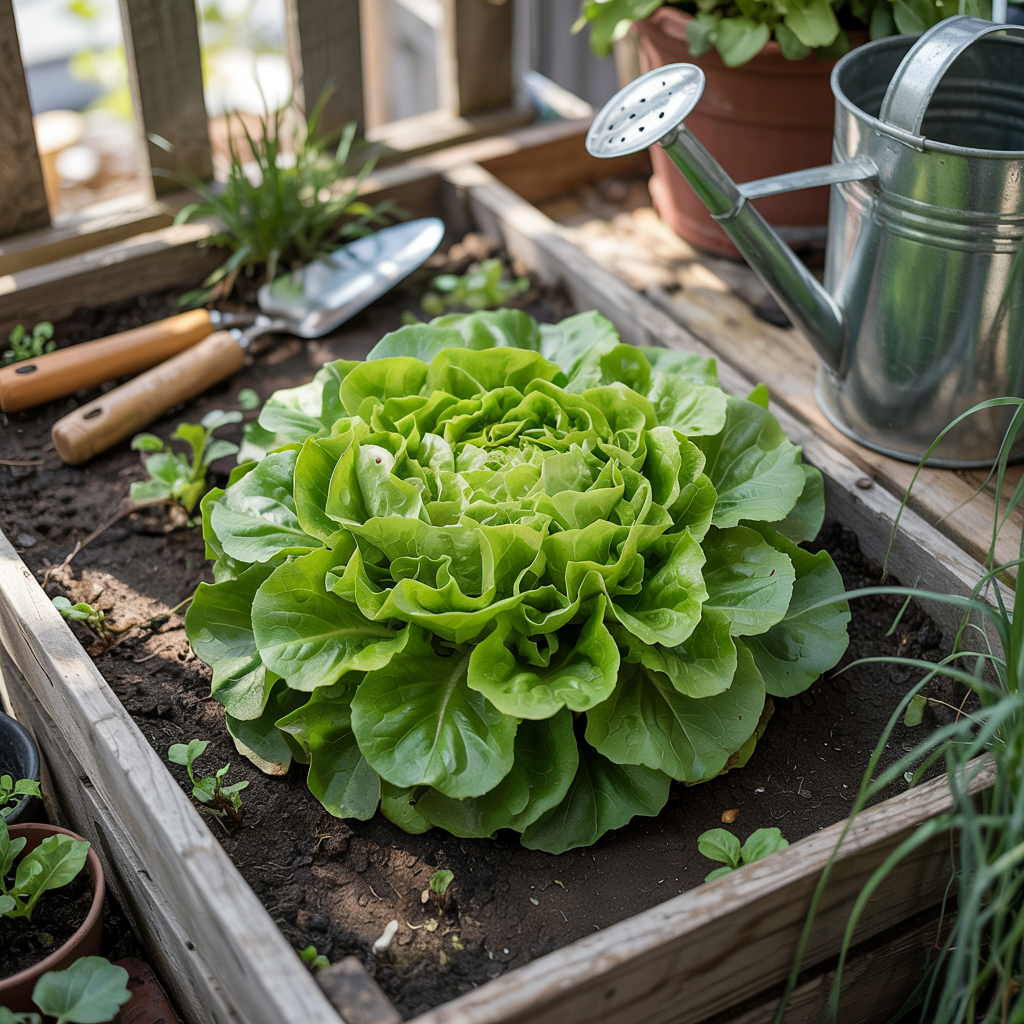
Why grow it? It’s fast, easy, and perfect for fresh salads year-round.
Container tips:
- Use shallow, wide containers (6–8″ deep).
- Loose-leaf varieties like ‘Buttercrunch’ or ‘Red Sails’ grow quickly.
- Harvest outer leaves regularly for continuous production.
👉 Try this with your homemade ranch dressing for a fresh salad straight from your patio!
🌤️ Sunlight: Partial Sun to Partial Shade
Lettuce prefers 4–6 hours of sun. In hot climates, a little afternoon shade helps prevent bolting.
🌱 How to Grow Lettuce in Containers:
- Fill the container with potting mix mixed with compost.
- Sow seeds ¼ inch deep and lightly cover with soil.
- Water gently and keep the soil moist but not soggy.
- Thin seedlings once they sprout, spacing them 3–4 inches apart.
- Harvest outer leaves when they reach 4–6 inches tall.
➡️ Bonus Tip: Lettuce is a great veggie to succession-plant every couple of weeks for a non-stop supply.
🌱 2. Spinach
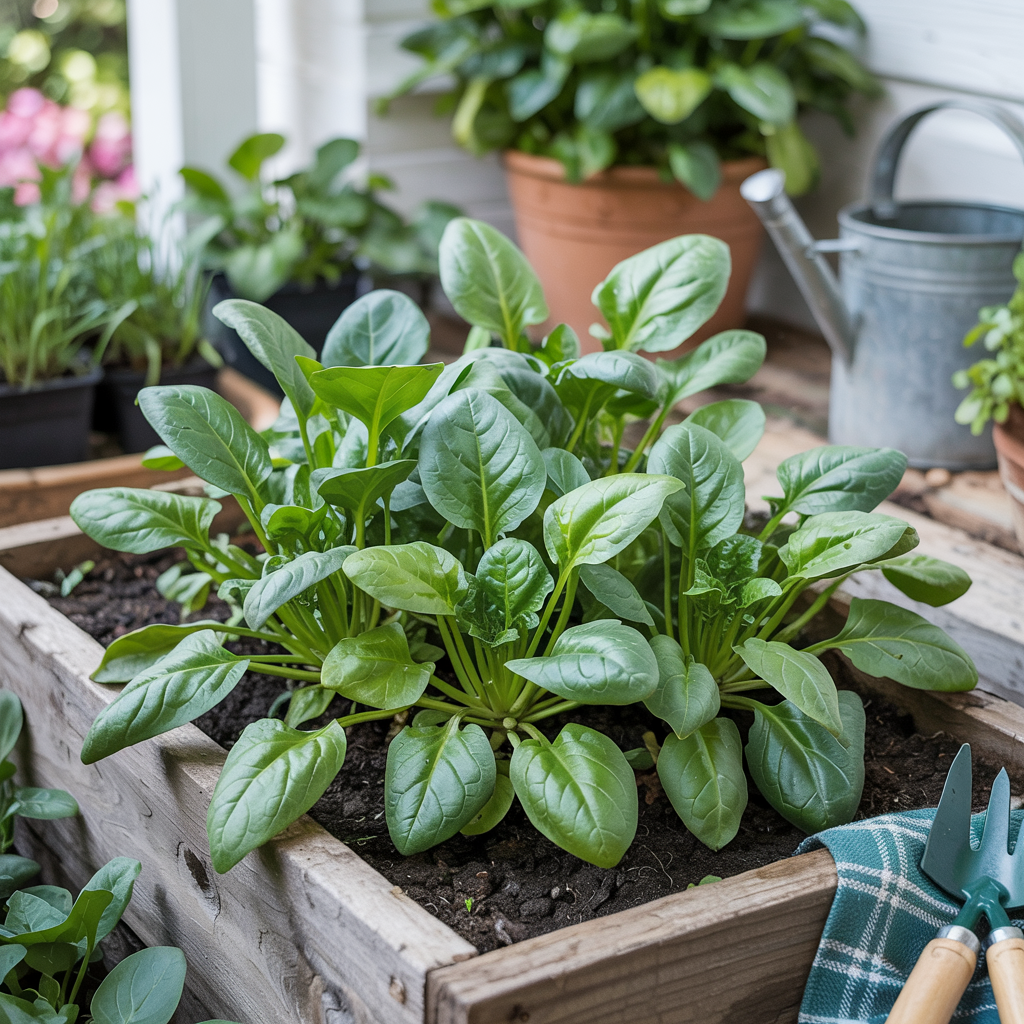
Why grow it? Spinach is excellent for smoothies, omelets, and sautéed dishes—plus it’s cold-hardy and fast-growing.
Container tips:
- Loves cooler temps and partial shade.
- Keep soil moist and fertilize with compost.
- Harvest young leaves for the best flavor.
🔗 Related post: My Favorite Green Smoothie with Garden Spinach
🌤️ Sunlight: Partial Sun to Partial Shade
Spinach grows best with 3–6 hours of sun and can tolerate less during warmer months.
🌱 How to Grow Spinach in Containers:
- Choose a 6–8 inch deep pot and fill with loose potting mix.
- Plant seeds ½ inch deep and 2 inches apart.
- Water consistently to keep the soil evenly moist.
- Thin seedlings to 4 inches apart once they sprout.
- Harvest baby leaves at 3–4 inches tall or wait for mature leaves.
➡️ Good to Know: You can get multiple harvests by cutting the leaves instead of pulling the whole plant.
🧅 3. Green Onions (Scallions)
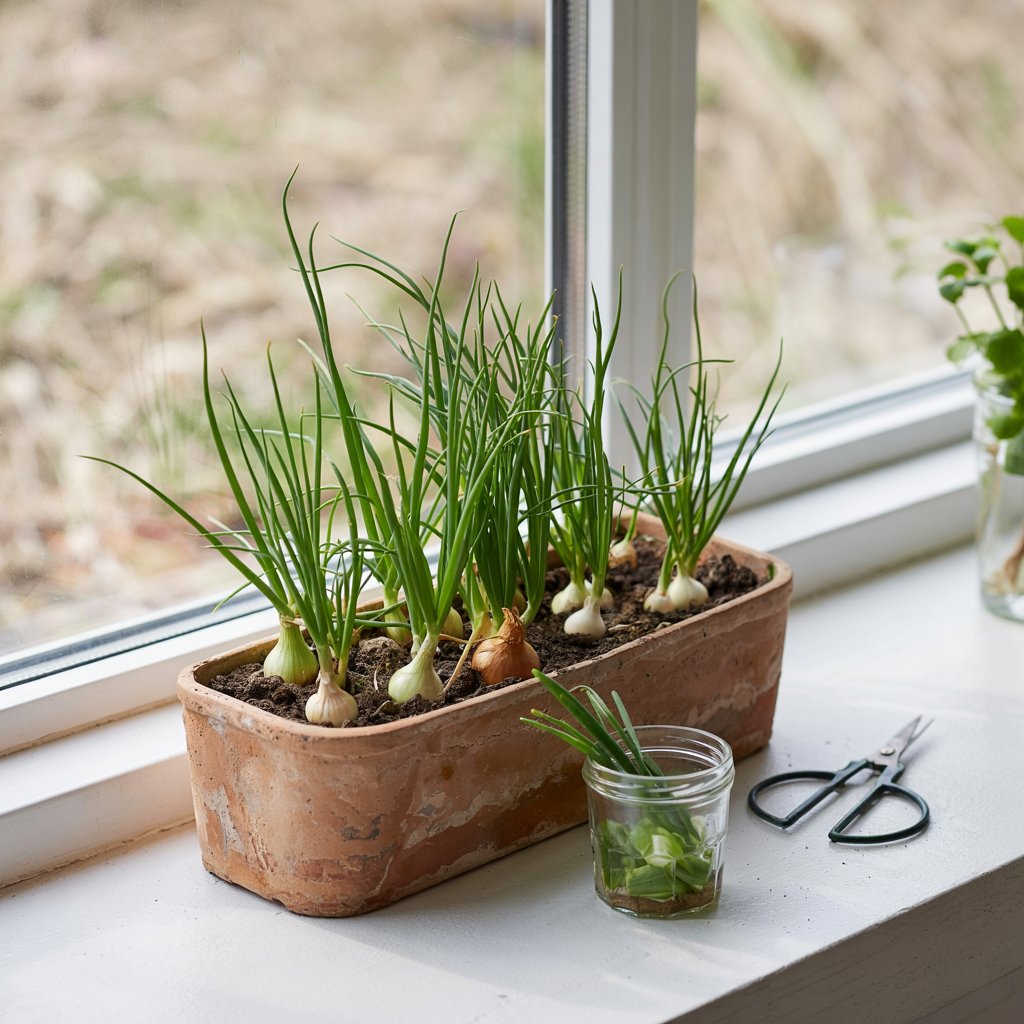
Why grow it? These flavorful little onions are incredibly low-maintenance and can be regrown from scraps!
Container tips:
- Regrow from store-bought roots or start from seed.
- Perfect for windowsill gardening.
- Snip and let regrow—no need to replant each time!
💡 Pro tip: Keep a small pot of green onions by your kitchen sink for quick access!
🌤️ Sunlight: Full Sun
Green onions prefer 6+ hours of direct sunlight daily but can tolerate partial sun as well.
🌱 How to Grow Green Onions in Containers:
- Use a 6–8 inch deep pot with quality potting mix.
- Plant seeds or onion bottoms 1 inch apart.
- Water lightly every few days to keep soil moist.
- Cut green tops as needed, leaving the white base to regrow.
- Harvest the entire plant after 6–8 weeks, or regrow continually from scraps.
➡️ Helpful Hint: If you’re tight on space, green onions grow well indoors near a sunny window.
🌶️ 4. Peppers (Mini or Bell)
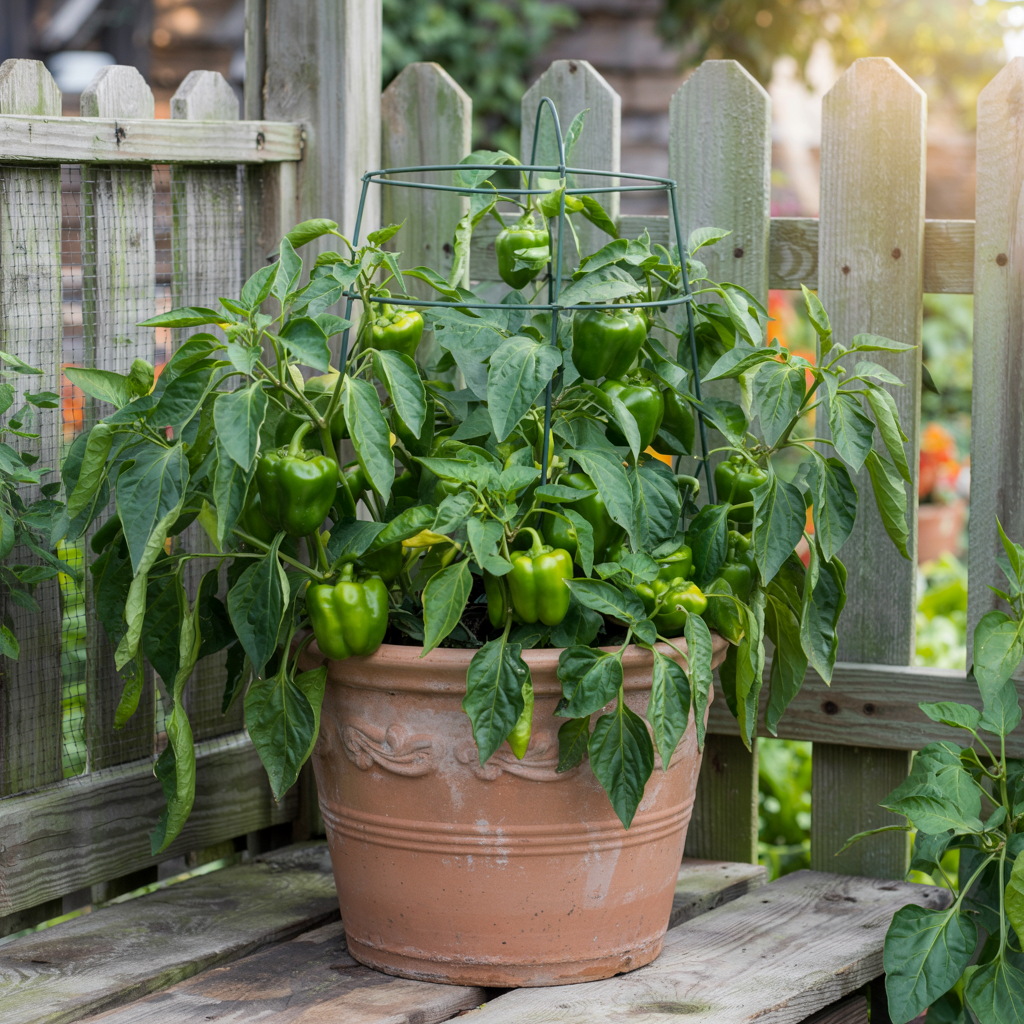
Why grow it? Peppers add color, crunch, and flavor to almost every dish—and they do great in containers!
Container tips:
- Use 5+ gallon containers with good drainage.
- Choose compact or patio varieties.
- Use stakes or cages for support and bring indoors during cold months.
🌞 Optional: Add a small grow light like this one to keep them thriving indoors!
The VIVOSUN 2-Pack Durable Waterproof Seedling Heat Mats are designed to enhance germination and propagation in indoor gardening and greenhouse settings. Each mat measures 10" x 20.75", fitting standard 1020 trays, and maintains temperatures between 68-86°F (20-30°C), ideal for seed starting and cutting propagation. Crafted with advanced far-infrared heating technology, these mats ensure stable and uniform heat distribution without scorching roots. The strengthened heating film with double insulation layers enhances durability and safety. Water-resistant and easy to clean, they feature a fortified connection between the mat and power cord, meeting stringent MET standards. Operating at only 18 watts, these energy-efficient mats are a practical addition to any indoor gardening setup.
🌤️ Sunlight: Full Sun
Peppers need 6–8+ hours of direct sunlight daily to produce well.
🌱 How to Grow Peppers in Containers:
- Fill a large container (at least 12 inches deep) with potting mix and compost.
- Plant seedlings after the last frost or start indoors 6–8 weeks early.
- Place in full sun (6+ hours per day).
- Water deeply once or twice a week.
- Feed with a tomato or vegetable fertilizer every 2–3 weeks.
- Harvest when peppers are firm and fully colored.
➡️ Remember: The more sun they get, the better your yield will be!
🫘 5. Bush Beans
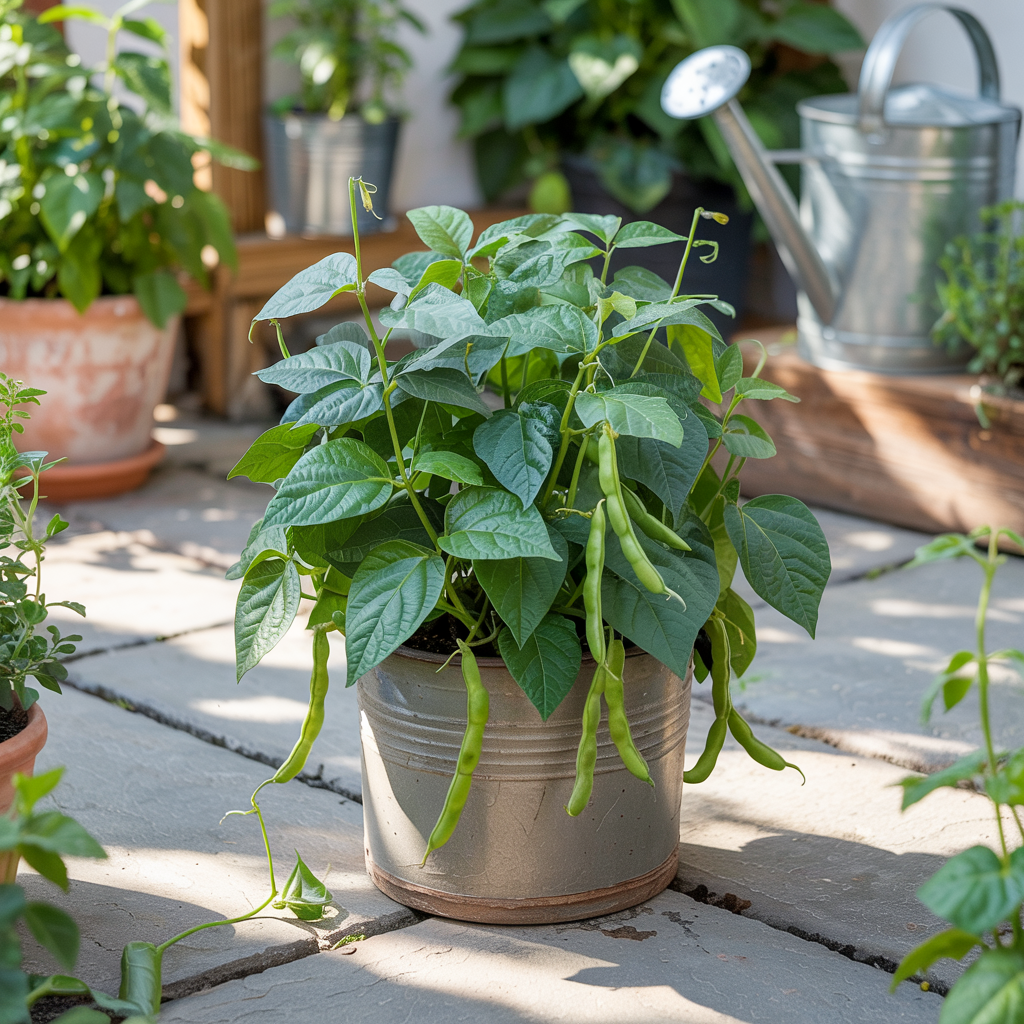
Why grow it? Bush beans are compact, productive, and high in protein—what’s not to love?
Container tips:
- Use a container at least 10–12″ deep.
- Water regularly and avoid wetting the leaves.
- Harvest when pods are firm but not tough.
🍳 Try them sautéed with garlic and olive oil—delicious and simple!
🌤️ Sunlight: Full Sun
Bush beans need 6–8 hours of sun daily to thrive and produce good yields.
🌱 How to Grow Bush Beans in Containers:
- Choose a deep container and fill with well-draining potting mix.
- Sow seeds 1 inch deep and 4 inches apart.
- Water when the top inch of soil feels dry.
- No support needed for bush types.
- Harvest pods when they’re plump but still tender—don’t wait too long!
➡️ Extra Tip: Harvest often to encourage new pod production.
🧠 Expert Growing Tips
To make the most of your container garden:
- Rotate crops and refresh soil every season.
- Add mulch on top of containers to retain moisture.
- Use rolling plant stands to follow the sun.
- Supplement with grow lights for year-round indoor growing.
💡 Tip: Use mulch or coconut coir to prevent soil from drying out too fast.
Coco coir, derived from coconut husks, is a sustainable and versatile growing medium widely used in gardening and horticulture. The 650-gram bricks (5-pack) offer an organic, OMRI-listed option for enhancing garden soil, starting seeds, and mulching.
Key Features:
- Organic and Sustainable: Made from 100% natural coconut fibers, these coco coir bricks provide an eco-friendly alternative to peat moss, promoting sustainable gardening practices.
- Excellent Water Retention and Aeration: Coco coir's fibrous texture retains moisture effectively while ensuring proper aeration, creating an optimal environment for root development and reducing the frequency of watering.
- Versatile Applications: Ideal for use as a soil amendment, seed starter medium, or mulch, coco coir enhances soil structure, prevents compaction, and supports healthy plant growth across various gardening applications.
- OMRI-Listed: Being OMRI-listed signifies that this product meets organic standards, making it suitable for organic gardening and farming practices.
Usage Instructions:
- Hydration: Place a 650-gram coco coir brick in a large container and add approximately 8 liters (2 gallons) of water. Allow it to absorb the water and expand for about 15-30 minutes.
- Loosening: Once fully expanded, fluff the coir with your hands or a garden tool to achieve a light, airy consistency.
- Application: Use the hydrated coco coir as a standalone growing medium or mix it with other components like perlite, vermiculite, or compost to create a customized potting mix tailored to your plants' needs.
Incorporating these coco coir bricks into your gardening routine can improve soil health, support robust plant development, and contribute to environmentally conscious cultivation practices.
🗓️ Planting & Harvesting Guide
Here’s a quick visual reference to help you know when to plant and when to harvest these 5 easy container vegetables:
📌 Save or pin this chart for easy reference throughout the year!
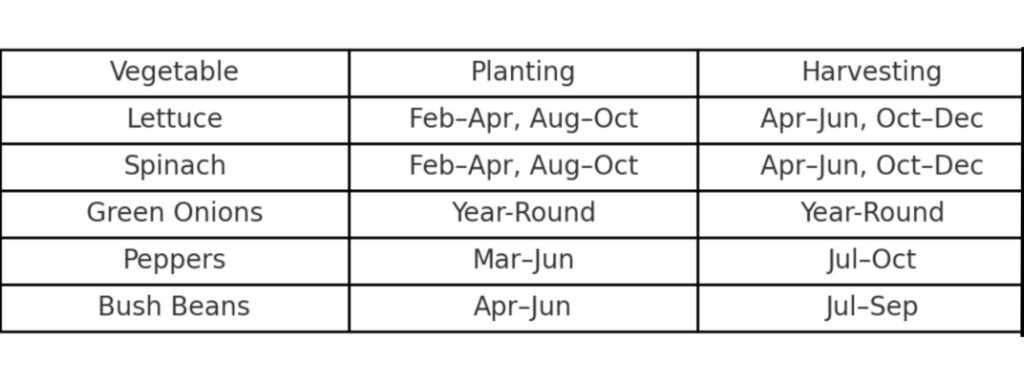
❄️ Cold Weather Tip
If you’re in a chilly zone, don’t worry! Simply move your pots indoors near a sunny window or set up a small grow light system. Frost cloth or cold frames can also help extend your growing season outdoors.
🍽️ Easy Meals You Can Make
Now that you’re growing your own fresh produce, here are a few delicious ways to use it:
- 🥗 Garden Fresh Salad
- 🍳 Spinach & Pepper Omelet
- 🌮 DIY Lettuce Wrap Tacos
- 🫘 Garlic Green Beans
- 🍜 Scallion Stir-Fry
🔗 Find more of my favorite quick garden-to-table meals here.
🧺 Storage Tips
Keep your harvest fresh with these simple tricks:
- Lettuce & Spinach: Store dry in a produce bag with a paper towel.
- Green Onions: Keep in water or wrapped in a damp paper towel.
- Peppers & Beans: Store in the fridge’s crisper drawer.
🙋♀️ FAQs
Q: Can I grow these veggies indoors in winter?
A: Absolutely! With a sunny window or a grow light, most of these can thrive indoors.
Q: How often should I water container vegetables?
A: Check soil daily—water when the top inch is dry. In hot weather, you may need to water once or twice a day.
Q: What kind of fertilizer should I use to grow vegetables in pots year-round?
A: A balanced, slow-release fertilizer or diluted liquid feed every few weeks works great.
📌 Final Thoughts
In conclusion, container gardening is a simple and rewarding way to grow fresh, healthy vegetables right at home. Whether you’re working with a patio, balcony, or sunny windowsill, these five grocery staples are a fantastic place to start. With just a few containers and sunlight, you can grow vegetables in pots year-round and enjoy fresh harvests anytime.🌿✨
📍 Pin this for later:

